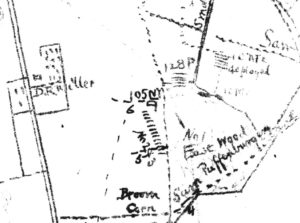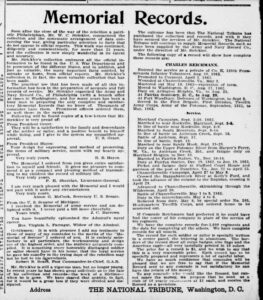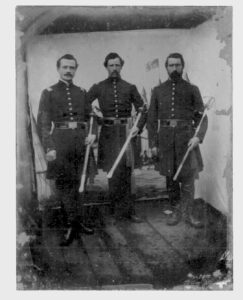Ben Witcher’s Story
26 June 2019
The map above is centered on the eastern part of the Miller Cornfield near the East Woods at Sharpsburg on the morning of 17 September 1862. There has been heavy fighting here since dawn and, along with other regiments in action, the 6th Georgia Infantry has been nearly wiped out. It is between 8 and 9 in the morning.
Stephen Sears, in his classic Antietam book Landscape Turned Red (1983), wrote this dramatic vignette of that time and place:
Private B. H. Witcher of the 6th Georgia urged a comrade to stand fast with him, pointing to the neatly aligned ranks still lying to their right and left. They were all dead men, his companion yelled at him, and to prove it he fired a shot into a man on the ground a few yards away; the body did not twitch. Private Witcher was convinced and joined the retreat.
Over the years since I first read it, I had forgotten Benjamin Witcher’s name, but not that story. Who could forget that imagery? Even in combat, the shock of shooting into one of your own mess-mates would have been horrendous.
At least three other well-known books on the battle have used this anecdote, too, citing Landscape as their source. If you’ve read any of the basic literature, then, you will have seen it, and you’d remember.
But I’ve just found it isn’t true. It didn’t happen that way.
This lovely piece is a decorative military record – “very tastefully printed in 10 colors” – for Private Samuel Wilson Evans of the 12th Pennsylvania Reserves. He served from 1861 to 1864 and saw action at South Mountain on 14 September and at Antietam on 17 September 1862.
This certificate was produced by the Army and Navy Record Company, which was started in about 1883 by Walter C. Strickler (c. 1837-after 1920) of Philadelphia – an outgrowth of his personal project to gather an exhaustive timeline for every Union military unit and action of the Civil War. Strickler’s son Theodore compiled some of that work in When and Where we Met Each Other on Shore and Afloat … (1899).
The colorful parts of this decorative record were printed, but Evans’ name and service details are hand-written. It was “presented” in his name to his wife Sarah Jane and daughters Margaret, Nellie May, and Mary Belle on 1 October 1905. The original is about 19×27 inches and it’s online thanks to the Maryland State Archives.
Below is an advertisement in the National Tribune of 5 October 1905. By that time the National Tribune had bought out Strickler, and was offering these certificates on their own. Strickler and the Tribune had been in a marketing relationship for some years before.
Rorty and Kelly making their escape.
17 May 2019
County Donegal native Lieutenant James McKay Rorty was Ordnance Officer of the First Division, 2nd Army Corps (Brigadier General Israel B. Richardson) at Antietam. He was heroically and famously killed at Gettysburg in July 1862 while in command of Battery B, 1st New York Light Artillery – a remnant of the old Irish Brigade/2nd Artillery Battalion in which he’d originally been commissioned in 1861.
Equally famously, as a Private in the 69th New York Militia he’d been wounded and captured at First Bull Run on 21 July 1861 and held in a warehouse in Richmond, VA. On 18 September he and two other men, 1Sgt. William O’Donohue and Pvt. Peter Kelly, disguised themselves in civilian clothes and escaped. A week later they made it to the Potomac River and rafted out to Federal gunboats.
That’s the scene in the illustration above, from Frank Leslie’s Pictorial History of The War of 1861, posted online in company with a piece about Rorty from The Wild Geese.
The escapees are (probably) seen in the photograph below – left to right, Kelly, Rorty, O’Donohue – taken later, after all three were commissioned officers. It’s from owner Matt Regan and is online from Harry Smeltzer.
[updated February 2021]





